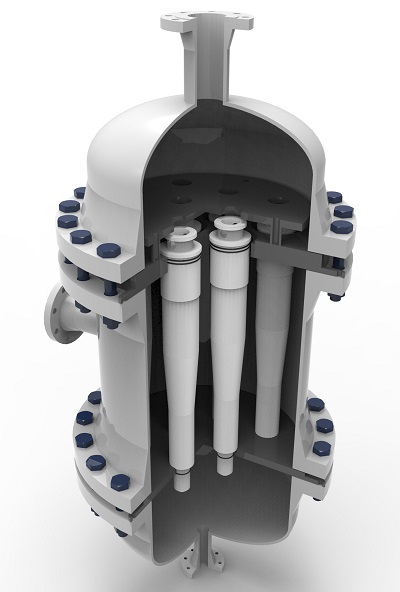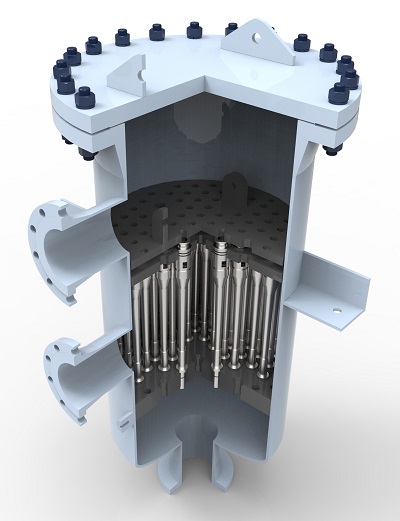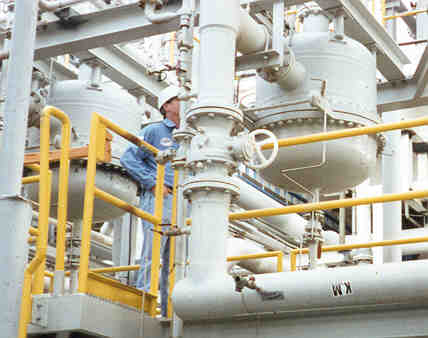Desanding Hydrocyclones
Send us an enquiry by downloading the Input Data Sheet, and return to us at sales@eprocess-tech.com
eProcess Desanding Hydrocyclone (Desander) is a fit-for-purpose solid-liquid cyclone designed to remove sand from produced water streams. This technology is most commonly installed on the outlet of a three-phase or FWKO separator. Designed primarily for water flow streams the Desander removes sand to protect downstream oil-water separation equipment (deoiling hydrocyclones, CPI’s, flotation cells, or media filters) or prevent solids transport to reinjection wells. Supplied in either component or skid-based format the Desander is available in ASME (150#-1500#) design rating.


eProcess Desanding Hydrocyclones are pressure drop dependent, where the produced water is directed into the cyclone liner causing the solids to spin under a centrifugal force. These strong forces cause the solids and liquids to separate. Solids spiral down the cyclone to the underflow outlet, while the remaining fluids are forced in the opposite direction to the overflow. The process is a simple and effective separator, with a 2-3 second retention time, and no moving parts.
Benefits:
- No moving parts, low maintenance, and little downtime requirements result in significant capital and operating cost savings
- Compact – 10% of the size and weight of conventional filter systems provide easier mobilization
- Eliminates solids erosion on downstream process equipment including pipework, valves, chokes, and process vessels
- Provides solids removal prior to oil contamination and eliminates sludge formation and other difficult solids accumulation problems in separators and other pressure vessels
- Protects downstream oil-water separation equipment (i.e. deoiling hydrocyclones, CPI’s, flotation cells, and media filters)
Operations:
- Desanders are available in several sizes. Systems used in oil and gas production are typically in the 1 to 3 inch range and separate 98% of particles from 10 to 25 microns and larger
- Operating pressure drop requirements vary from 5 to 50 psi, with the larger desanders units handling solids volumes of up to 5% and the smaller units handling up to 1% by volume
- Produced water streams typically contain between 100 to 1,000 ppm. At these concentrations a desander will typically reduce solids loading to 10 to 20 ppm and remove solids up to 99% by weight.
Cleaning, Storage & Transportation:
- Solids are typically collected into a dedicated secondary accumulator vessel. At high operating pressures the accumulator prevents high quantities of gas flashing to atmosphere during the purge cycle. For low pressure applications an atmospheric tank will suffice.
- Solids cleaning is performed by a closed loop cyclonic co-current process system carefully designed to ensure adequate scrubbing through turbulent flow operation
- To ensure liquids content in the final batch is minimized, water is reduced by the use of a filter-bin. The solids remain and the water is collected and pumped to a slops tank. The final sand slurry is typically >90% solids by volume.
- The collected solids are removed either by tank replacement or by vacuum truck operation

